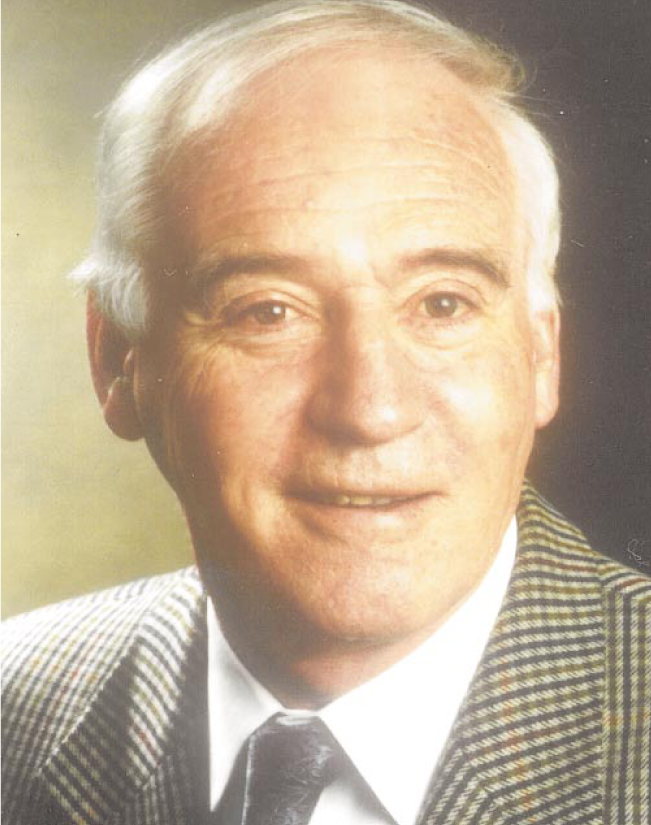Lochlainn O’Raifeartaigh
DOI: 10.1063/1.1428447
Lochlainn O’Raifeartaigh, a senior professor of theoretical physics at the Dublin Institute for Advanced Studies (DIAS), died of liver cancer on 18 November 2000 in Dublin, Ireland.
O’Raifeartaigh was born in Dublin on 11 March 1933. His father, as Ireland’s first chairman of the Higher Education Authority, was instrumental in developing university education in Ireland. After O’Raifeartaigh received his master’s degree in mathematical physics from University College Dublin in 1956, he entered DIAS, where he studied for one year with the great Irish relativist John L. Synge. O’Raifeartaigh’s paper on Fermi coordinates was one of three he wrote during that year.
In 1957, he was given a grant by DIAS to study under Walter Heitler, one of the pioneers of quantum field theory, at the University of Zürich. O’Raifeartaigh received his doctorate in theoretical physics there in 1960. The subject of his thesis was the S-matrix in the nonlocal field theory of Edmond Arnous and Heitler.
He returned to DIAS as an assistant professor of physics in 1961. He spent the winter of 1963-64 at the Madras Institute for Mathematical Sciences, where he lectured on local Lie groups and their representations. In the autumn of 1964, he went on extended leave from DIAS to Syracuse University.
At Syracuse, O’Raifeartaigh made a discovery that established his reputation: He proved, in 1965, that it was impossible to combine internal and geometric (relativistic) symmetries of the Lie group type in a nontrivial way. This result, which became known as O’Raifeartaigh’s Theorem, brought to an abrupt end major efforts to effect this combination. Brilliant application of group theoretical methods, as manifested in this work, became a unifying theme in his long and distinguished career.
O’Raifeartaigh spent the 1967-68 academic year at the Institute for Advanced Study in Princeton, New Jersey, to continue his work on masssplitting theorems. In 1968, he returned to DIAS as a senior professor in the school of theoretical physics. O’Raifeartaigh’s teaching style epitomized the principles on which the school was founded—the investigation of the mathematical principles of natural philosophy and the training of advanced students in methods of original research. The excitement of discovery driving discussion at the blackboard late into the evening provided the best training in methods of original research that one could imagine. The school flourished thanks to O’Raifeartaigh’s talent for discovery, his infectious enthusiasm, and his ability as a teacher.
As new concepts arose in theoretical particle physics, O’Raifeartaigh made significant contributions to each. In the 1970s, non-abelian gauge theories and supersymmetry grew in importance. The new supersymmetries evaded O’Raifeartaigh’s Theorem simply because they were not Lie group symmetries. They required bosons and fermions to exist in massdegenerate pairs. Because there was no experimental evidence for these mass-degenerate pairs, if these symmetries were to prove useful in constructing models of elementary particles, a method had to be found for breaking the supersymmetries, hopefully spontaneously, as had proved so fruitful for the non-Abelian gauge theories. O’Raifeartaigh showed how this could be done through the mechanism that now bears his name.
In the 1980s, intrigued by Gerard ’t Hooft and Alexander Polyakov’s discovery that non-Abelian gauge theories predicted the possibility of magnetic monopoles, O’Raifeartaigh explored the general structure of monopoles and made fundamental contributions to the understanding of nonspherically symmetric monopoles. His interest in physics extended to topics that had a fundamental feel or were simply intriguing.
Out of this rich collection of topics were two especially important interests he pursued in the 1990s. The first, in collaboration with Alfredo Iorio, Ivo Sachs, and Christian Wiesendanger, tackled the question, When does scale invariance imply conformal invariance? They discovered a simple algebraic criterion for conformal invariance. This enabled them to determine, for arbitrary spin, which scale invariant Lagrangians are also conformally invariant.
A second outstanding contribution, in collaboration with Renate Flume, Marc Magro, Sachs, and Weisendanger, showed that the Seiberg-Witten effective Lagrangian for the gauge group SU(2) is unique and can be constructed using supersymmetry and analyticity arguments without using duality, as was originally done. The limitations of this approach were also carefully stated. Both contributions demonstrate O’Raifeartaigh’s passion for clarity and his ability to get to the essential features of a problem. He was fond of saying that the difficulty of a problem often lies precisely in understanding what the problem is.
In 2000, O’Raifeartaigh was awarded the Eugene Wigner Medal by the Group Theory and Fundamental Physics Foundation.
In addition to being a theoretical physicist, O’Raifeartaigh was a lecturer in great demand, and had friends and collaborators worldwide. He also was an accomplished historian, as is apparent in his book The Dawning of Gauge Theory (Princeton University Press, 1997). In the cause of nuclear disarmament, he and Nobel Laureate Ernest Walton helped Michael Fry establish the Irish Pugwash Group.
O’Raifeartaigh’s interests were not confined to physics. He was fluent in Irish, French, and German and was an enthusiastic theatergoer and keen hill-walker. He was a man of faith. His friends admired him for his simplicity, thoughtfulness, kindness, humor, and extensive knowledge of physics.


More about the Authors
John T. Lewis. 1 Dublin Institute for Advanced Studies, Dublin, Ireland .
William McGlinn. 2 University of Notre Dame, Notre Dame, Indiana, US .
Siddhartha Sen. 3 Trinity College, Dublin, Ireland .
